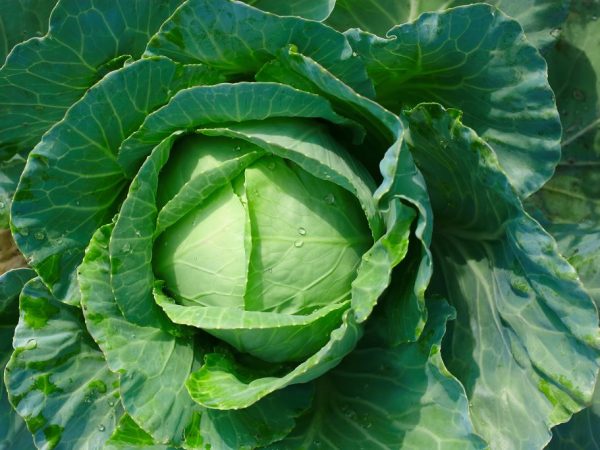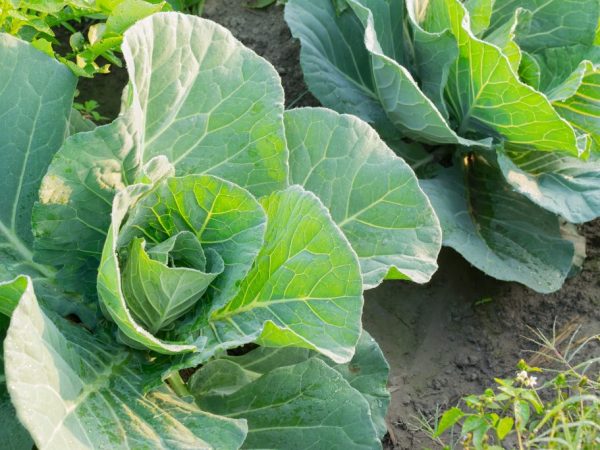Characteristics of cabbage variety Mirror F1
Mirror cabbage is one of the most common vegetable crops grown in summer cottages. The variety has gained popularity due to its high taste characteristics and unpretentious care.

Characteristics of cabbage variety Mirror F1
Characteristics of the variety
Mirror F1 is a hybrid variety. Its advantage lies in a consistently high yield. Even with high humidity or, conversely, dry and hot weather, Mirror gives a good harvest.
A distinctive feature of the variety is its resistance to shooting. Heads of cabbage not harvested at the stage of technical maturity increase in size, but do not go into arrows.
Description of the head
The head of cabbage grows medium in size. Its weight does not exceed 3 kg. The leaves are loosely attached to each other and form a rounded, elongated one at the base of the forks.
Description of cabbage Mirror:
- light green color at the stage of technical maturity of the vegetable;
- delicate veins on the leaves that do not get rough over time;
- thin elongated stump, suitable for food.
Cabbage leaves contain a lot of glucose. This makes them sweet and juicy. Also, the vegetable is rich in iodine, selenium, vitamins A, B and C.
Application
Mirror cabbage is most commonly used fresh. It is sweet and juicy, so it is suitable for making salads and vegetable cuts. Cold appetizers are prepared from the vegetable with the addition of fresh cucumber, carrots, radishes and onions. This way the maximum of useful vitamins and minerals is preserved, but such salads can be consumed no later than 6-7 hours after preparation.
Also, cabbage is suitable for cooking hot meals. You can make meat or vegetable cabbage rolls, hot side dishes, stew a vegetable with tomato and carrots. This variety is not suitable for winter preservation, pickling or pickling. The delicate structure of the leaf loses its taste and becomes too soft. Such dishes go bad quickly.
Landing
Seeds of ultra-early cabbage Mirror are planted for seedlings in late February or early March. It depends on where the vegetable will grow: in a greenhouse, greenhouse or outdoors.
The advantage of the F1 hybrid is seen immediately during seed germination. Seedlings appear 6-7 days after planting.
The growing season when planting under the covering material is up to 50 days. If you plant seeds in open ground, the period increases to 60-65 days. For growing Mirror in the middle lane, the beds are covered with a film or other heat-saving materials.
Sowing in the ground is carried out in early April. The sowing depth is 1.5-2 cm. When the seeds are deepened, excessive stretching of the plants is observed.
The soil
The culture gives high yields not only on fertile peat lands, but also on clay soils. It is important to change cabbage planting sites and observe crop rotation. The vegetable is planted in areas where it was previously grown:
- bow;
- cucumbers;
- legumes;
- beet.
Preparing the land for planting early cabbage begins in autumn, the site is dug up and fertilized. For fertilization, organic compost, manure and humus are used. In early spring, the garden is dug up again, adding wood ash.
Care

Maintain your plants well
Top dressing of Mirror cabbage with mineral fertilizers occurs in stages:
- During the first week after planting in open ground, the seedlings are fed with urea. The solution is prepared at the rate of 3 tbsp. l. for 1 bucket of water. This amount is enough for 10 bushes.
- Before setting the head of cabbage, the culture needs nitrogen. The growth of the plant, the size and weight of the head of cabbage depend on this.
- When the forks are tied, organic feeding is necessary. How often depends on poverty or, conversely, soil saturation.
Organic fertilizers, such as bird droppings, manure, wood ash, are prepared in advance, a day before feeding. The fertilizer is poured halfway with water in a large container. This mass is stirred several times until a homogeneous liquid is obtained. Before feeding, the fertilizer is diluted with water in a ratio of 1:10.
Early cabbage loves moisture, so it is watered 3-4 times a week, the soil should not be allowed to dry out. After each watering, the soil is loosened to provide oxygen to the root system.
With proper care, feeding and watering, the first crops are harvested in mid-May. If you plant seedlings with a difference of 1.5-2 weeks, the cabbage is harvested in 2 stages.
Pests and diseases
Mirror F1 cabbage is resistant to fungal diseases. Even a disease such as fusarium is not terrible for a hybrid of this variety.
Insects are capable of harming cabbage:
- The cabbage fly damages the roots of the plant, after which the leaves turn yellow and wither. She lays eggs at the root collar of the plant. The larvae that are born gnaw the roots and penetrate the stump, where they feed on the tissues of the plant. Cabbage dies quickly.
- Cabbage whitewash damages cabbage leaves and already set heads. It is not the fly itself that is terrible, but its offspring. The insect lays eggs on cabbage leaves. After hatching, the caterpillars devour the head from the inside.
- Aphids are small insects that live in huge colonies. The pest feeds on plant juices, which leads to its depletion. The bush stops growing and does not form forks. If aphids infect young seedlings, they die.
- Cruciferous fleas are small black bugs that feed on cruciferous leaves. They quickly destroy all plantings.
Pest control
For pest control, sprinkling with crushed wood ash and spraying with tobacco broth helps. To obtain a decoction of 0.5 kg of tobacco dust, 2 liters of water are poured. The solution is boiled and filtered, then soap is added. The resulting liquid is diluted in a bucket of water. With this solution, if necessary, spray the leaves and ovary of cabbage.
An infusion of red hot pepper is also effective. The powder is infused in 1 liter of water and then abundantly sprayed with cabbage bushes. Such a procedure does not harm the plant itself.
Conclusion
Early cabbage of the Mirror variety is one of the most productive varieties, therefore it is grown both in private household plots and in farm fields. The early harvest is delivered to retail chains and markets.
Cabbage of this variety is easy to transport, it does not lose its presentation. It can be transported on special racks or in mesh bags.

